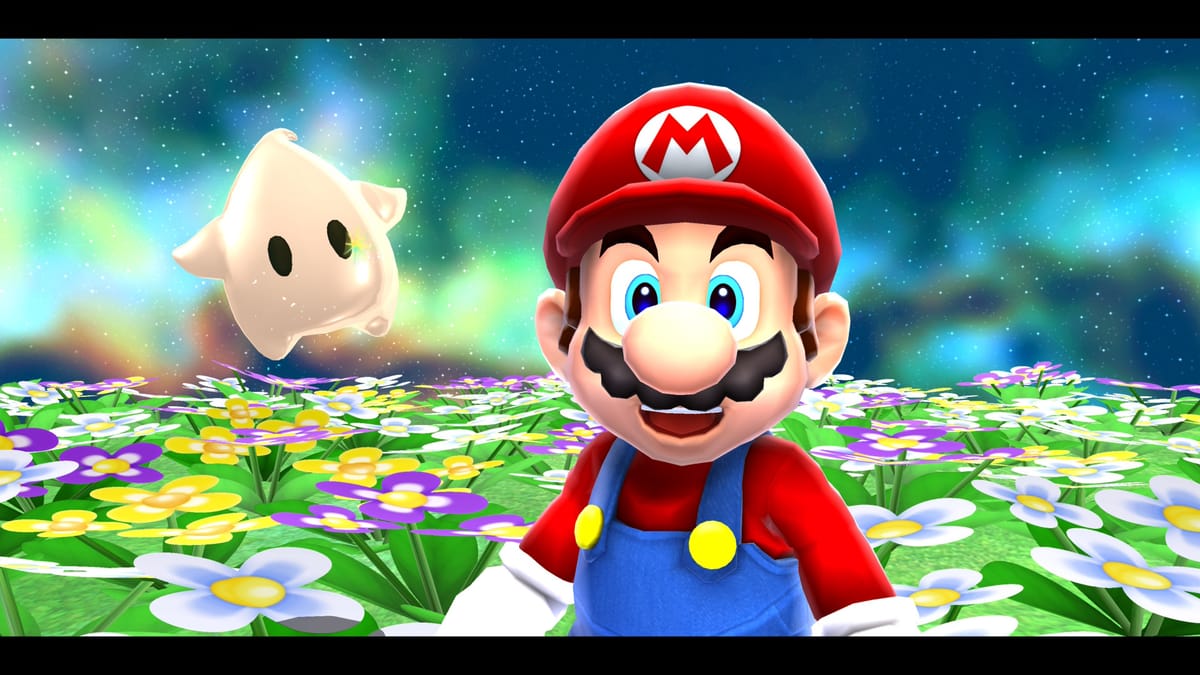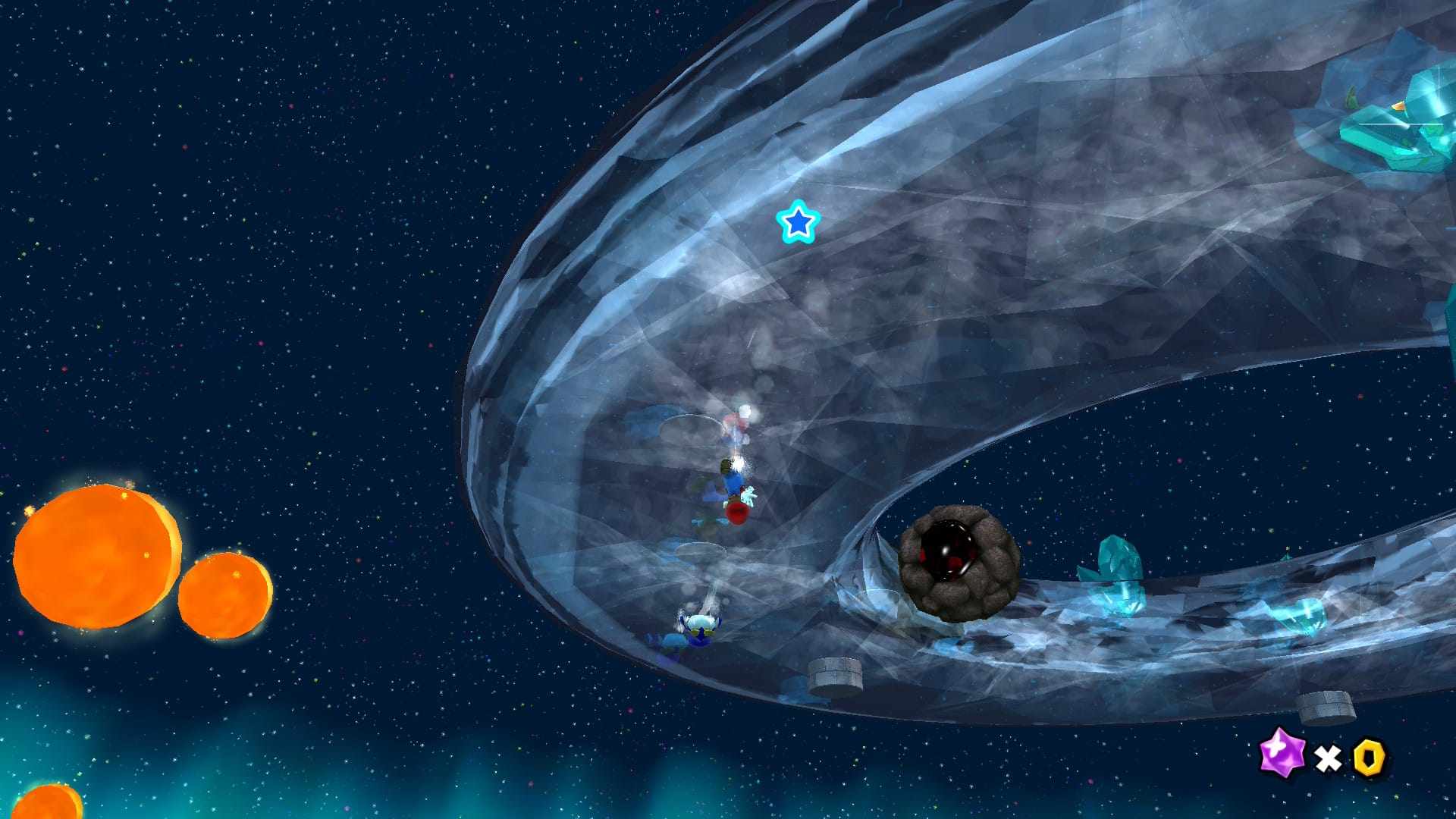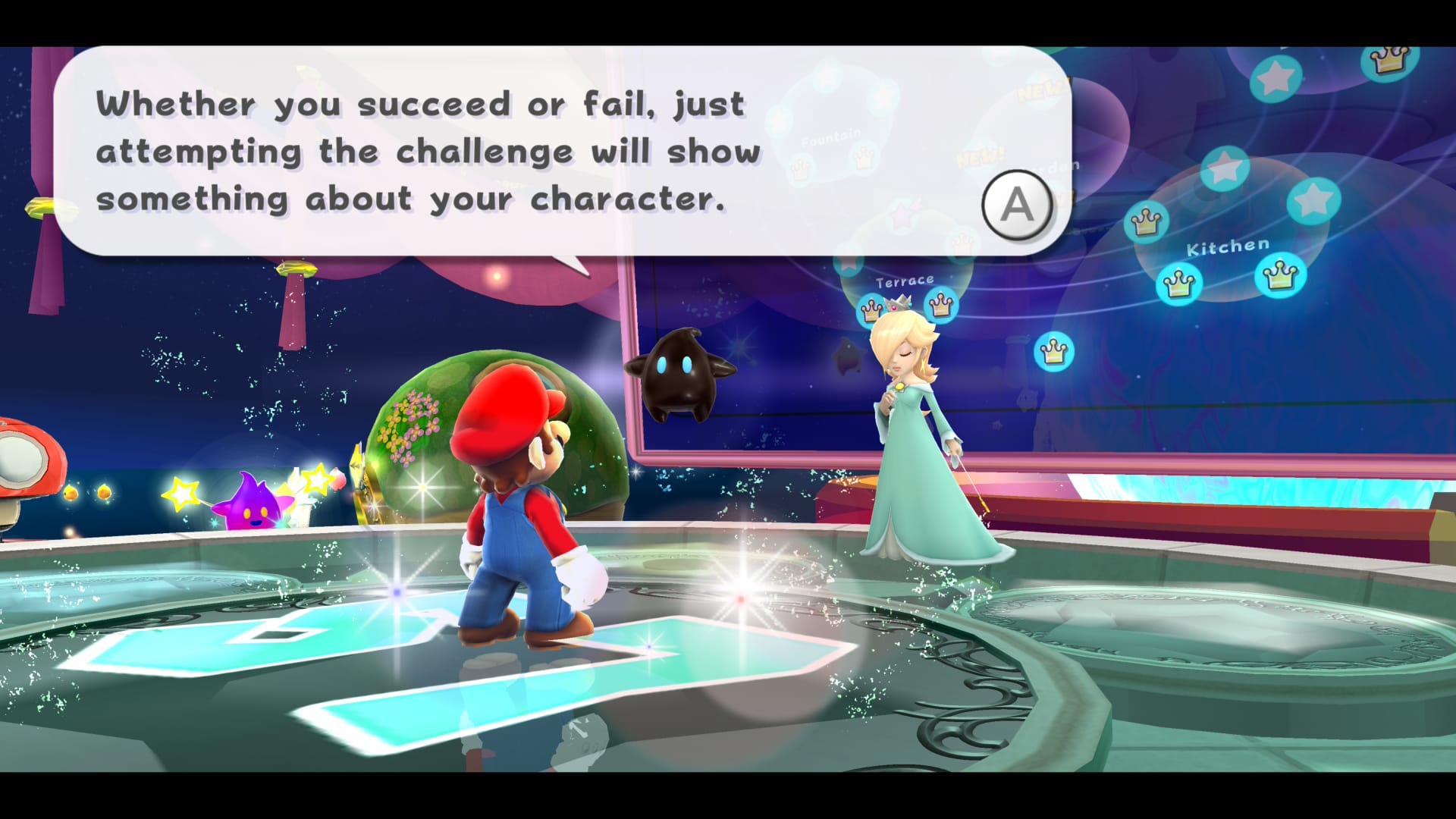
There’s a special feeling I get when revisiting games from my childhood. It’s part nostalgia, sure, but I think there’s more to it than just that. While I’ll never get to experience a game for the first time ever again, there’s something equally exciting about seeing a title through fresh but familiar eyes. As a kid, I played Super Mario Galaxy 1 and 2 to death, getting every star as both Mario and Luigi multiple times over. Eventually I had my fill and moved on, with my memories of both titles becoming more fuzzy as the years passed.
Of course, I played Galaxy 1 again with Super Mario 3D All-Stars back in 2020 since it was a limited release (FOMO is my weakness), but after getting 100% as Mario, I just didn’t feel compelled to do so again as Luigi. It was a decent port, but as I play mostly in portable mode, touching the screen to use the pointer constantly felt like a chore. I’m still glad I played it, but given a choice between 3D All-Stars and the original Wii version, I’d pick the Wii every time. Once again, the game began to fade from memory, and those memories were this time tinged with a bit of a sour note.
Fast forward five years to now, and Nintendo is celebrating another Mario anniversary! This time by… releasing Super Mario Galaxy on the Switch. Again. For $40. To say I was skeptical would be an understatement, but I do love this game and it was coming alongside Super Mario Galaxy 2, a game I love even more. I expected a simple, standalone version of what was found in 3D All-Stars and for those childhood memories to remain a bit sour, but I actually find myself with a newfound appreciation of both of these titles. There are things I can see in them now that I just couldn’t as a child, and it’s made me more excited than ever to see and do everything they have to offer all over again.
Originally released in 2007 for the Nintendo Wii, Super Mario Galaxy sees Princess Peach kidnapped by Bowser once again and it’s up to Mario to rescue her… but this time in spaaaaaaaace! The game fully utilized the space theme by allowing Mario to run all the way around small planetoids, up some walls and ceilings, fly through the cosmos, and wahoo his way to victory. While Ratchet & Clank beat Mario to the spherical punch about 4 years earlier, this was and I’d argue still is a novel concept. It’s a little janky at times as while holding a single direction Mario will rarely get confused and start running in a circle, but it’s always a ton of fun. A mark of a good platformer is when you can enjoy yourself simply by moving around or exploring a central hub like Rosalina’s Observatory, and you certainly get that here. Mario might not feel as smooth to control as he did back in the day thanks to Super Mario Odyssey and Donkey Kong Bananza, but Galaxy remains a joy to play thanks to inventive and varied level design.
In fact, the team had so many inventive and varied ideas that they could fill an entire sequel with them, which is how Super Mario Galaxy 2 was born in 2010 to the Nintendo Wii. It’s more linear than the original, using a more standard world map structure instead of a freeform galaxy select, but this allows the game to use each level more disposably. The moment you start to feel like a galaxy has run its course, it’s on to the next one which has its own unique ideas, themes, and gimmicks. The big addition here is Yoshi, though you don’t get to use him as often as you’d think given he’s on the front of the box. I said at the top of this review that I prefer Galaxy 2, and while that’s still the case, I think both titles have fun and interesting takes on 3D Mario. Both use the “goal post” style rather than Mario 64 or Sunshine’s sandbox approach, but Galaxy 1 does retain some sandbox-y elements with larger levels while Galaxy 2 is more about obstacle course design. The first game feels like a complete thought, and Galaxy 2 is an extension of that thought and can feel somewhat incomplete without being paired with the original.
I think the opposite is true of their stories, though I can’t really discuss that without spoiling anything which is something I’d never thought I’d say about a Mario game, let alone one I played over a decade ago. While people complained that Galaxy 2 pretends the first game didn’t happen, let’s just say I think that’s fully intentional and actually a continuation of the first game’s themes. Playing them back to back finally put that into perspective for me.

Perspective, in a different sense, is also why I’d probably reach for these Switch versions when the Mario itch strikes again in the future. 3D All-Stars did touch up Galaxy 1 a bit, but this is on a whole new level and closer to what I’d call a remaster than a rerelease or port. From what I can tell, every single texture in both games has been redone and they look stunning, especially in 1080p in handheld or 4K in TV mode on Switch 2. The geometry is still very much the same as it was on the Wii though, which can make it much easier to see the flaws, especially under certain lighting conditions. Mario’s model here wasn’t created for HD, and the textures, while gorgeous, do highlight this a bit, especially around his waist or on his jaw. There’s a weird seam in his overalls where his chest meets his legs, making him look like he’s been split into two halves and put back together. Meanwhile, his face has some very clear, flat planes that you can see up close. Most of the game is viewed from much further back, however, so it’s easy to forget about both of these issues.
The controls have also seen a slight update from 3D All-Stars, and it’s just enough to make this version ideal when combined with the enhanced visuals. In portable mode, you don’t have to touch the screen for pointer functionality anymore, and can instead use the same motion control method like in TV or Tabletop modes. It’s a small thing, but it makes a big difference in making the game more playable in Portable mode. Sure, I feel a bit silly tilting my system around constantly, but it’s better than constantly moving one of my hands off of the controls to swipe or tap on the screen all the time. Menus also finally support button controls, though the pointer will always take priority if it's active. It’s a little frustrating sometimes, like in Galaxy 2 when you’re trying to enter the level Starship Mario is on but the pointer is hovering over a different galaxy, but in general it works well enough.

It could certainly be better, though. For example, while the motion controls are nice I’d still love the option to control the pointer with the right stick. You really don’t need to turn the camera that often, and it still only moves in pre-determined angles when flicking the stick. The D-Pad also does nothing, so having the option to move camera controls over there and put pointer controls on the right stick would be great. Heck, on Switch 2 using mouse mode for pointer movement would be an absolute dream, and it’s already something Player 2 can do in Co-Star mode, so why not let Player 1 toggle it on? Instead, the options menu is solely for inverting the camera controls in various situations. It’s better than nothing, but I don’t think that’s a standard Nintendo really wants to shoot for.
These versions also add a few extra goodies, including Amiibo support, new chapters in Roaslina’s Storybook in Galaxy 1, and an entirely new storybook in Galaxy 2. Amiibo simply give you more starbits, lives, or coins, so really if you want the figures it’d be more to display them. The storybooks are the real highlight here, especially seeing as the original chapters were already so beloved. Galaxy 1 adds an epilogue to Rosalina’s story, while Galaxy 2 has four chapters about a pair of twin Lumas. Rosalina’s Storybook wasn’t originally planned for the game, and added in the developers’ spare time, but I think it really completes the message Galaxy is trying to convey. Galaxy 2’s storybook reinforces this in a great way, giving a bit more backstory to a major character (and making them trans in a roundabout way thanks to localization differences, which is awesome), and telling a touching story all on its own.
Nintendo gets a lot of flack and praise in equal measure for their games and business decisions, and rightly so. Their games are almost always some of the best to come out that year, but they often lack decent options menus or are simply too expensive, especially right now. Go anywhere on the internet, and you can find people talking about these topics (well, the options menus might just be me and people who need accessibility options). However, there is one thing I think Nintendo doesn’t get enough praise for: artistic intent. The majority of their games have some idea or concept they’re fully dedicated to conveying. Zelda is about going on an adventure and becoming a hero, how anyone can find the courage to do so; Metroid shows players beauty and fear in loneliness; Mario is about the pure joy of movement - I could go on. You can find countless videos on YouTube about the melancholy of something like Majora’s Mask, but those discussions are usually limited to Nintendo’s games that are darker in tone.
With these rereleases/remasters of Super Mario Galaxy 1 & 2, I imagine we’ll see discussions about the first title’s somewhat somber background resurface, but I also hope people begin to notice that there’s way more here to dissect. Together, the pair of Super Mario Galaxy 1 & 2 make for a beautiful tale about going with the flow and letting the joys and sorrows of the universe wash over you in equal measure. No matter what happens, it’ll all turn out OK. Change is scary, but it opens up brand new galaxies of possibilities too.
Super Mario Galaxy + Super Mario Galaxy 2
Great
Super Mario Galaxy + Super Mario Galaxy 2 feels less like a simple rerelease and something closer to a remaster, especially when played on Switch 2. While not as polished and fully featured as they could be for the price tag, these are still phenomenal games and absolutely worth blasting off in again and again.
Pros
- Amazing level design
- Fantastic music
- Improved pointer controls
- Gorgeous new textures
Cons
- Mario can look very weird under certain lighting conditions
- Controls can mess up occasionally
- Could use more options for pointer functionality
This review is based on a retail Nintendo Switch 2 copy provided by the publisher.
